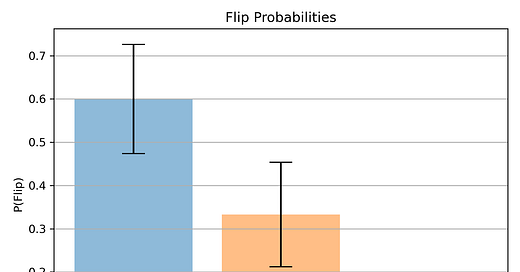How to estimate memetaticity of a policy dimension
Just ask people if they would change their views
In my manuscript I define a through-time model breaking down political change into various components.
They are genetics, economic incentives, and memetics. I call these heritaticity, econoticity and memetaticity, similar to heritability, environmentability and memetability at one time.
Basically, each one is the amount of generational change of some trait explained by change in an underlying component, like genes or “culture” (M).
Now an interesting question is how to estimate these for a given policy dimension, such as substance banning, high school abolitioning, or women voting.
I think a simple procedure will give an estimate of memetaticity:
Ask people their views on a policy dimension.
Ask if there is any information that would make them change it. Prompting is okay as we want to produce an upper bound for memetaticity and prompting should only increase the false positive rate, if it is biasing at all.
The memetacity of a policy position is the potential flip rate given a view. A memetacity of a through-time change in a policy dimension can be estimated by the flip rate of the diminished position over the new average policy view.
For example, I ran a survey on prolific. I found everyone currently supported no restrictions on coffee, no reduction of high school, and no repeal of the 19th amendment. 60% said they would support restrictions on coffee if new information were found (such as it being carcinogenic), 33% said they would support reducing high school under new information (its uselessness, teenage maturity, etc), and nobody said they would roll back woman voting .
This implies a memetacity of 0% on feminism. People were not memed into the 19th amendment, because they cannot be memed out.
If we supposed we went from 0 to 1 on high school support, only 33% would be memed into it. If we went from say, .4 to 1, it would be 33/60 = 55% memes. So to some degree memes are active in the high school policy arena and propaganda could work.
Coffee banning is a parallel to tobacco. From the very high P(Flip), we can deduce that if people went from 0 to 0.7 or so on tabacco banning, it was .66/0.7 = 94% memes, for example. So if you wanted to unrestrict tobacco, you need to put out pro-tobacco propaganda. If you are being deceptive with this propaganda, it probably wouldn’t work, but that’s a different subject.
This method seems valid, and gives us the expected result for feminism, which seems genetically determined, while also showing that other policy areas can be more informatic (e.g. “““cultural”””).






Banger as usual
What do you think causes the variance in memetacity? Just less vs. more contentious issues